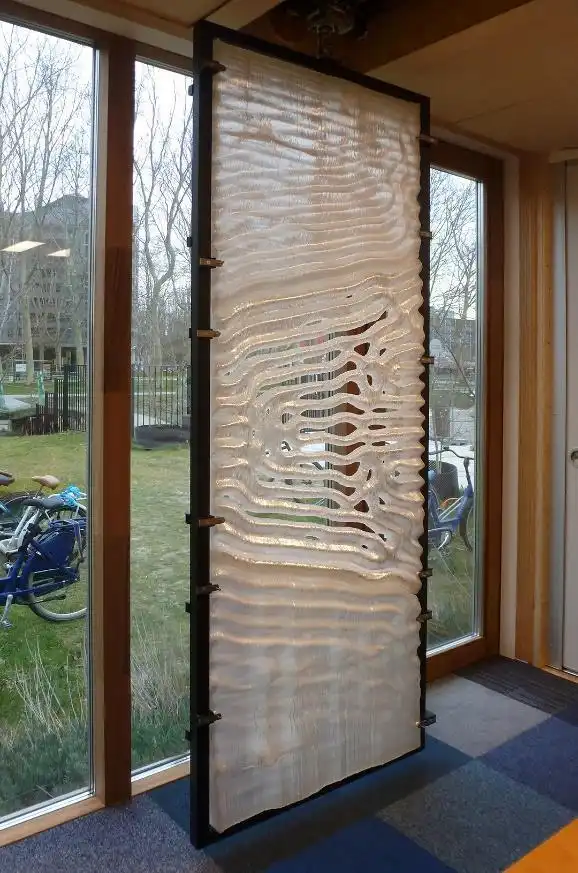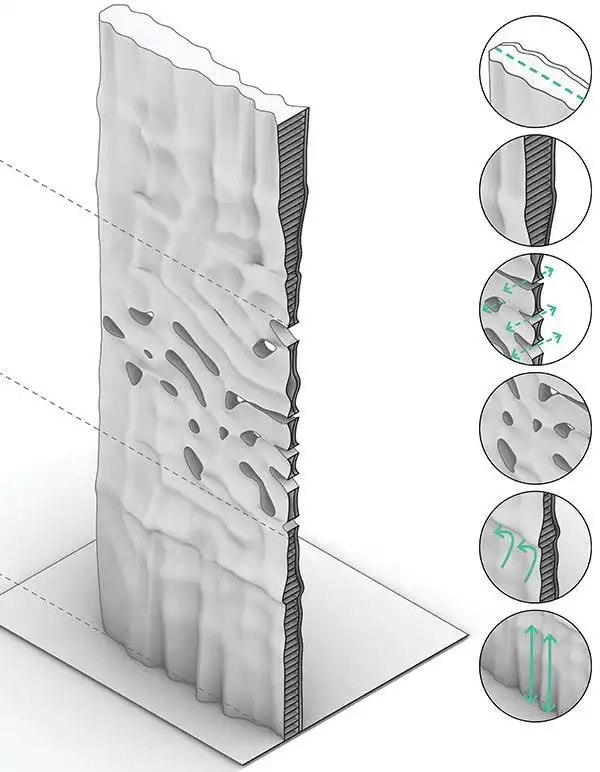
1 minute read
2.4.4 Thermosyphon effect

Figure 8: (Left) Double face 2.0, a geometrically optimised Trombe wall (TUDelft, Farrugia, E, 2018) Figure 9: (Right) Double face 2.0, 3D model (TUDelft, Farrugia, E, 2018)
Advertisement
Phase-changing materials can absorb the same amount of solar energy through latent heat storage in a much smaller volume. The heat is absorbed via an endothermic reaction during the temperature increase of the material changes from solid to liquid. The stored heat is released into the building via an exothermic reaction when the material changes from liquid to solid during cool nights.
These passive solar systems work with similar principles, absorbing solar heat during the day and radiating the heat into the room throughout the day and evening. Another principle of passive solar systems is the thermosyphon effect. The hot air rises above the cooler air as the system radiates heat. This hot-air-rising principle could be implemented into a system to create hot and cold air circulation.
2.4.4 Thermosyphon effect
The thermosyphon effect is a method of passive heat exchange based on natural convection. The thermosyphon effect exists when water heats. The water becomes less dense, lighter, with less hydrostatic pressure, causing the heated water to rise above the







